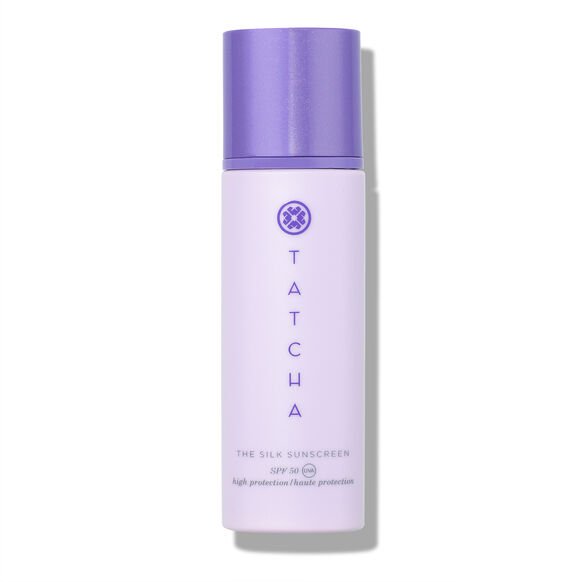Natural Sunscreen and the Importance of Daily SPF
We hear from skin experts that wearing a daily SPF (Sun Protection Factor) is essential and some of us follow that advice whether we understand why or not, but some of us don’t follow the advice, so after reading this, things will hopefully become a lot clearer and the choice of which SPF to add to your daily routine narrowed right down.
Why Wear a Daily SPF?
So let’s start at the beginning, and the reasons why wearing an SPF daily is so important. The bottom line is, that they help protect our skin against dangerous UV damage from the sun. This is the kind of damage that leads to early ageing (things like sunspots, thinning and dehydration,) to more hardcore things like skin cancer. By wearing an SPF, even if you start today, you are helping to protect your long-term health and precious skin from any more sun damage.
Essential Guide to Wearing SPF
We can all get on board with wearing an SPF while on holiday and in the summer months, but sun damage can happen all year round, even in the winter. Here are a few things we need to remember…
Ideally, wear nothing below a factor 30
Use a broad spectrum SPF (this means it protects against both UVA and UVB rays)
Apply your SPF 20 minutes before going out in the sun
Apply the equivalent of 2 tablespoons worth
Remember to apply it to your ears, neck, hands and feet.
Reapply every 2 hours
When to Apply Daily Facial SPF
After applying your morning moisturiser, apply your chosen facial SPF. Some skincare and makeup products contain added SPF but bear in mind that you need to be reapplying your SPF throughout the day, so a spray form may be beneficial if you have makeup on.
What Are UVA and UVB Rays?
Rays from the sun come through our atmosphere and get absorbed by our skin, these rays are called ultraviolet rays (UV) and provide our skin with some much-needed Vitamin D. Too much sun exposure is where the danger lies though, as these rays penetrate our skin and damage healthy skin cells, so protect your skin in the form of clothing or an SPF. You can check the levels of UV on your weather app, being super careful when it reads high, very high, or extreme.
UVA - These rays are not absorbed by the ever-thinning ozone layer, and invisibly penetrate deep into our skin, showing later signs of ageing and loss of elasticity.
UVB - These rays are partially blocked by the ozone layer (less so now) and are the culprit of our red sunburn and cancerous cells.
What Is the Difference Between Natural and Chemical Sunscreen?
Natural sunscreen, also known as mineral sunscreen contains zinc oxide or titanium dioxide that creates a barrier on the skin to reflect UV rays. They are less likely to cause skin irritation and are considered safe for our skin and the planet, as they don’t contain any chemicals associated with coral reef damage. The slight downside is that the zinc may leave a white layer on the skin, but this can be avoided if you mix it with a body tint. That white layer is a good identifier to see if a sunscreen is a natural/mineral sunscreen.
Chemical sunscreen contains ingredients such as avobenzone, octinoxate or oxybenzone. They don’t create a barrier on the skin, but instead absorb the UV rays, turning them into heat which is then released from the skin. Some of these ingredients have been proven to be detrimental to coral health.
Words Explained…
Here are some words you may find being used when talking about sunscreen
Non Nano - This refers to zinc oxide, a natural ingredient found in natural sunscreen. It means that the particle is larger than 100nm and therefore won't penetrate your skin, which is a good thing! It is the safest option for UV filters and has been shown to be the safest option for marine life and coral reefs.
Topical - This simply means it can be applied to the skin.
Broad Spectrum - Protects the skin from both UVA and UVB rays.
Natural Sunscreen Products
£29.00
Use code SARAHMUA for 10% off
Zinc & cotton extract SPF30 sunscreen. Non-greasy, non-nano daily sunscreen that protects against UVA + UVB and sits comfortably under makeup.
Mineral filter zinc oxide protects against UVA and UVB while cotton extract helps skin repair from the damage caused by UVB, UVA, infra-red and visible radiation.
Reef-safe and ocean-friendly sunscreen.
Suitable for all skin types, including sensitive skin.
£48.00
Use code SARAHMUA for 10% off
A smooth texture that’s comfortable to wear day after day, it provides UVA, UVB and blue light deflection that’s reef-friendly, non-greasy and with no sticky white cast.
Keep your skin protected and hydrated all year round, with nourishing natural antioxidants including grape ferment extract to stimulate natural Vitamin D production, plus hyaluronic acid and sweet almond oil for deep hydration.
A lightweight finish that makes an excellent base layer for make-up and gentle even on acne-prone or sensitive skin.
Subtle natural scent of orange blossom.
Also available for the body
£35.00
A multitasking primer that provides a dewy, glowing base. This primer also protects against infrared radiation and helps to filter blue light.
Available in a range of shades, the primer contains niacinamide to help even out the skin tone and minimise the look of pores. Cocoa peptides help to filter blue light, while sea lavender provides long-lasting hydration and antioxidant protection. Hyaluronic acid and vitamin B5 work to boost the skin’s hydration levels.
Supergoop Glowscreen SPF 30 is gluten-free and vegan. Use to give the skin a healthy-looking glow with or without makeup.
Also available in clear
£46.00
Use code SARAHMUA for 10% off
The SPF50 Sheer Mineral Sunscreen Drops combine Odacite's Sun Repair Complex with the highest UVA protection PA++++ to deliver high-performing sun protection and anti-ageing technology.
This mineral non-nano SPF formula is lightweight and fast-absorbing, leaving skin primed for makeup or ready to start the day, protecting against both the burning (UVB) and ageing effect (UVA) of the sun.
While the SPF factor measures the level of UVB protection, the PA rating measures the level of protection from UVA rays. With the highest PA++++ rating, Mineral Drops SPF50 Sheer Sunscreen offers strong protection against the long-term ageing effects of UVA, such as free radical damage, hyperpigmentation and wrinkles.
Suitable for all skin types.
Also available in tinted drops
£39.00
Use code SARAHMUA for 10% off
Nuori’s natural sunscreen is formulated using a new generation of transparent, non-nano zinc oxide that offers high protection against both UVA & UVB rays with a matte finish.
French maritime pine extract and carrot oil provide powerful antioxidant protection and give the cream its naturally tinted, universally flattering hue without the use of any colourants.
Lightweight, non-sticky primer-like finish that makes it ideal for daily usage.
£28.95
Use code SARAHMUA for 10% off
Madara Stem Cell Sunscreen SPF30 is a breakthrough mineral-based natural face sunscreen that ensures broad-spectrum UVA/UVB protection.
This mineral SPF is ultra-light and subtly tinted so that it is invisible on many skin tones.
£21.00
Use code SARAHMUA for 10% off
Sol De Ibiza Face & Body SPF30 is a highly effective mineral sunscreen that is plastic-free.
Contains a carefully chosen combination of hero ingredients to provide your skin with the ideal nourishing properties to keep it hydrated whilst protecting you from harmful UVA & UVB rays.
Sol De Ibiza is part of 1% for the Planet and is committing to give 1% of their gross sales to the preservation and restoration of the natural environment.
Suitable for all skin types, including sensitive.
Also available in SPF50
£27.00
A refreshing sunscreen in a convenient continuous spray for easy all-over application.
This broad-spectrum sunscreen shields the skin from harmful UVA and UVB rays and features a natural fragrance of Pina Colada, reminiscent of summer holidays. Water-resistant for up to 80 minutes, this lightweight sunscreen is ideal for long, active days in the sun. Coola’s plant protection complex provides antioxidant protection, helping to shield the skin from damaging free radicals and pollution.
With a vegan, reef-friendly 70% organic formulation, this hypoallergenic sunscreen is suitable for all lifestyles and skin types and is lightweight enough for everyday use.
£65.00
A lightweight touch packed with nourishing ingredients for a smoother and more even skin tone.
Featuring zinc oxide, it provides a light-as-air, reef-safe filter to protect the complexion against UVA and UVB rays.
Also featuring niacinamide and hyaluronic acid, the sunscreen helps the skin retain moisture for a smoother, more youthful appearance, while also helping to minimize pores, reduce redness and improve texture. With silk extract, rich in amino acids, it delivers a protective veil to hydrate the skin without weighing it down for a lustrous, radiant finish.
£23.00
Minimise signs of premature skin ageing. A moisturising skincare treatment that provides SPF 50 protection against UVA and UVB rays.
This serum is formulated with carnosine, a dipeptide composed of two amino acids that work to defend the skin from environmental damage including blue light and pollution. It also contains vitamin C to help brighten and protect as well as hydrating hyaluronic acid to reduce water loss from the skin. In addition, aloe vera helps to calm and nourish the complexion.
Fragrance-free, ideal for all skin types, use as the last step in any skincare routine.
(Use code SARAHMUA for 10% off purchases from Content Beauty when you spend over £50)










